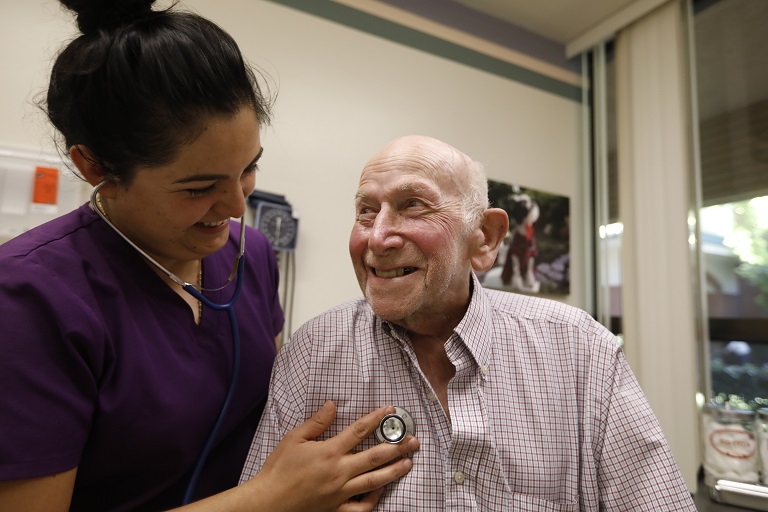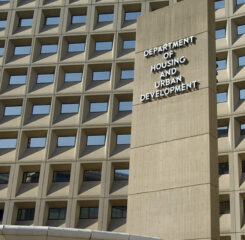BBB Includes Historic Housing Investments
On November 19, the House passed its Build Back Better bill. The bill, expected to be voted on in the Senate as soon as the week of December 6, would provide historic, market-shifting, opportunity-laden investments in affordable housing through many complimentary programs, including HUD and the Low Income Housing Tax Credit (LITHC) programs.
It is critical that all stakeholders express their support for the bill to Senate offices and urge them to protect, and even expand, the bill’s resources as the bill’s provisions could shift before the Senate vote.
LeadingAge applauded House passage of the bill. “Millions of older Americans and their families are holding their breath. The Senate’s job is clear–to adopt these investments without shaving off one dollar, and indeed to increase them,” LeadingAge president and CEO Katie Smith Sloan said in a November 19 statement.
For HUD affordable housing programs, the Build Back Better Act includes:
- $501 million, instead of the original bill’s $2.36 billion, for the Section 202 Supportive Housing for the Elderly program (see additional details below).
- $880 million, instead of the original bill’s $15 billion, for new Section 8 Project-Based Rental Assistance.
- $1.77 billion, instead of the original bill’s $6 billion, for energy and water efficiency and climate resiliency improvements to the Section 8 Project-Based Rental Assistance, Section 202, and Section 811 portfolios.
- $1.45 billion, instead of the original bill’s $4 billion, for the preservation and improvement of HUD multifamily housing (the Section 8 Project-Based Rental Assistance, Section 202, and Section 811 portfolios).
- $65 billion to revitalize public housing.
- $25 billion for new Housing Choice Vouchers.
- $15 billion for the national Housing Trust Fund. The national Housing Trust Fund has never received a federal funding allocation; it has been funded exclusively from Fannie Mae and Freddie Mac, which transfer a percentage of their new business volume into the HTF each year.
- $10 billion for the HOME program.
- $750 million for a redesigned Capital Magnet Fund, called the Housing Investment Fund. This program is actually within the Community Development Financial Institution fund at the Department of the Treasury (not HUD). The Housing Investment Fund will provide grants to invest in the development, preservation, rehabilitation, financing, or purchase of affordable housing for renters and homeowners within 120% of the area median income. The funds can also be used for rental housing operations.
Of the $501 million provided by Build Back Better for HUD’s Section 202 program, $450 million is for new Section 202 Housing. The $450 million in funding is expected to build more than 7,000 affordable homes for older adults with very low incomes over the next ten years. The operating subsidy for these new Section 202 homes will come from Section 8 Project-Based Rental Assistance (not Project Rental Assistance Contracts). To put into context how important these dollars are, for fiscal year 2021, Congress appropriated $52 million for new Section 202 homes. The bill includes $7.5 million for a new technical assistance center to help states better target services funding to older adult residents of affordable housing communities. The bill will also fund an unspecified number of new Service Coordinators. Also within the Section 202 account, the bill provides an additional $42.5 million for HUD’s administration of the new funds.
The bill also includes increases and improvements to the Low Income Housing Tax Credit program, including:
- LIHTC State Allocation Increases. According to the National Council of State Housing Agencies, whose members are the housing finance agencies that administer the credits at the state level, the phased-in LIHTC increases for 2022 to 2024 would result in approximately a 41% total increase over 2021 levels. In 2026 and years thereafter, the volume cap would be the 2025 amounts adjusted for inflation. Earlier versions of the Build Back Better bill included a temporary 60% cap state allocation increase phased in at 15% per year over four years (calendar years 2022 to 2025). In calendar year 2022, the per capita LIHTC state allocation would be $3.14, in CY23 it would be $3.54, and in CY24 it would be $3.97, before re-setting to $2.65 per capita in CY25. The small state minimums would increase to $3.629 million in CY22, $4.082 million in CY23, and $4.582 million in CY25, before re-setting to $3.120 million in CY25.
- Right of First Refusal Fixes. The bill would change the current LIHTC nonprofit Right of First Refusal a purchase option for newly financed properties. For existing agreements, the provision clarifies that the right to acquire the building includes the right to acquire all of the partnership interests relating to the building, including the right to acquire assets held for the development, operation, or maintenance of the building. The provision does not supersede express language in any existing partnership agreement. This change would be permanent. LeadingAge helped sound the alarm about nonprofit Right of First Refusal issues and educate nonprofits about problems and is very pleased with the bill’s inclusion of this language.
- Tax-exempt bond financing requirement. This provision temporarily reduces the 50% requirement to 25%, to enable housing credit deals to unlock more 4% credits for calendar years 2022 to 2026. Earlier versions of the Build Back Better bill extended this provision through 2028.
- Buildings designated to serve extremely low income households. The bill allows states to provide a 50% basis boost for LIHTC buildings that designate at least 20% of their occupied units for extremely low-income tenants and limit rent to no more than 30% of the greater of: 30% of area median income or the federal poverty line. The permanent provision is funded by a set-aside equal to 10% of a state’s housing credit allocation (and the set-aside is in addition to this allocation). At least 8% but no more than 13% of each state’s LIHTC volume cap must be allocated to such properties.
“After decades of disinvestment in our nation’s affordable housing programs, years of insisting that housing is infrastructure, and months of tough negotiations, the House has persevered today. I am immensely proud that the House has voted to pass the Build Back Better Act, and that this bill is now with the Senate for what I hope to be an imminent and easy vote in favor of the American people,” House Financial Services Chairwoman Maxine Waters (D-CA) said in a statement upon House passage of the bill.

Most Recommended
October 15, 2025
 Shutdown Week Three: Impact of Ongoing Closure on Affordable Housing
Shutdown Week Three: Impact of Ongoing Closure on Affordable Housing
December 10, 2025
Fiscal Year (FY) Funding 2026
October 07, 2025
Immigrant Workforce Matching Program Brings Workforce Relief
Recently Added
December 19, 2025
House Moves Forward on Affordable Housing Reforms
December 19, 2025
White House Cannabis EO Paves Way for Research, Access
December 19, 2025
LeadingAge Urges DHS to Maintain "Public Charge" Guardrails
December 18, 2025



